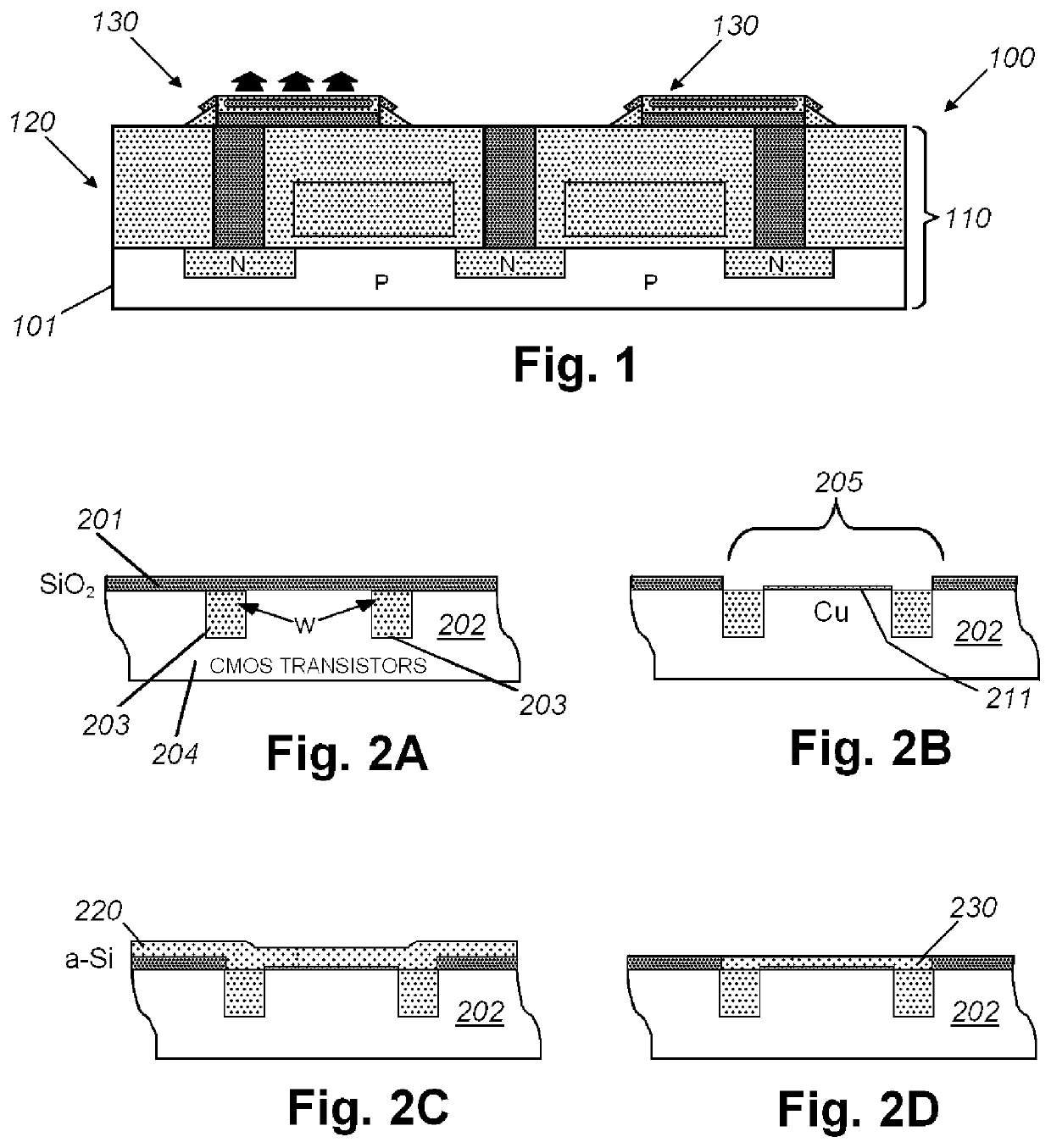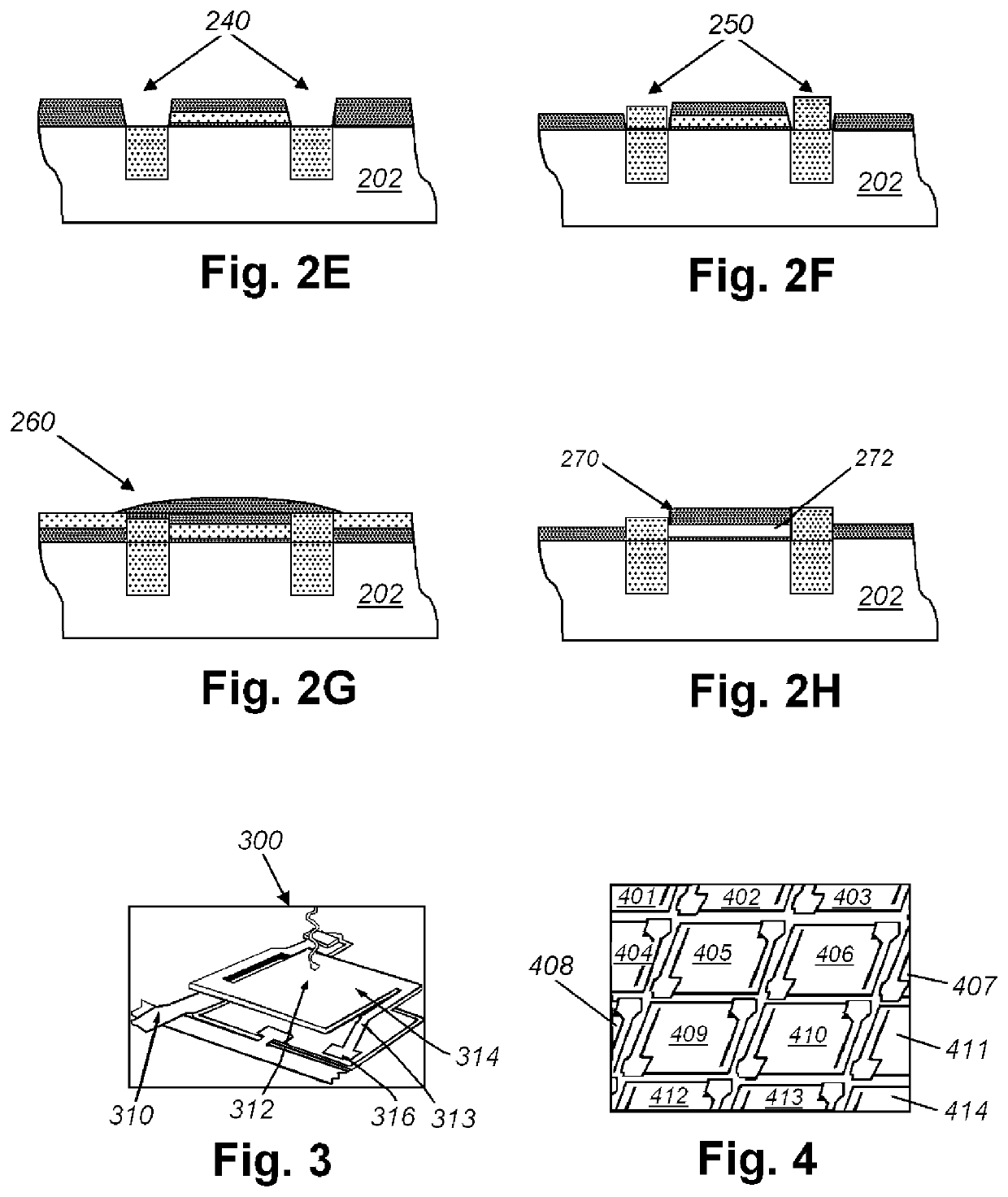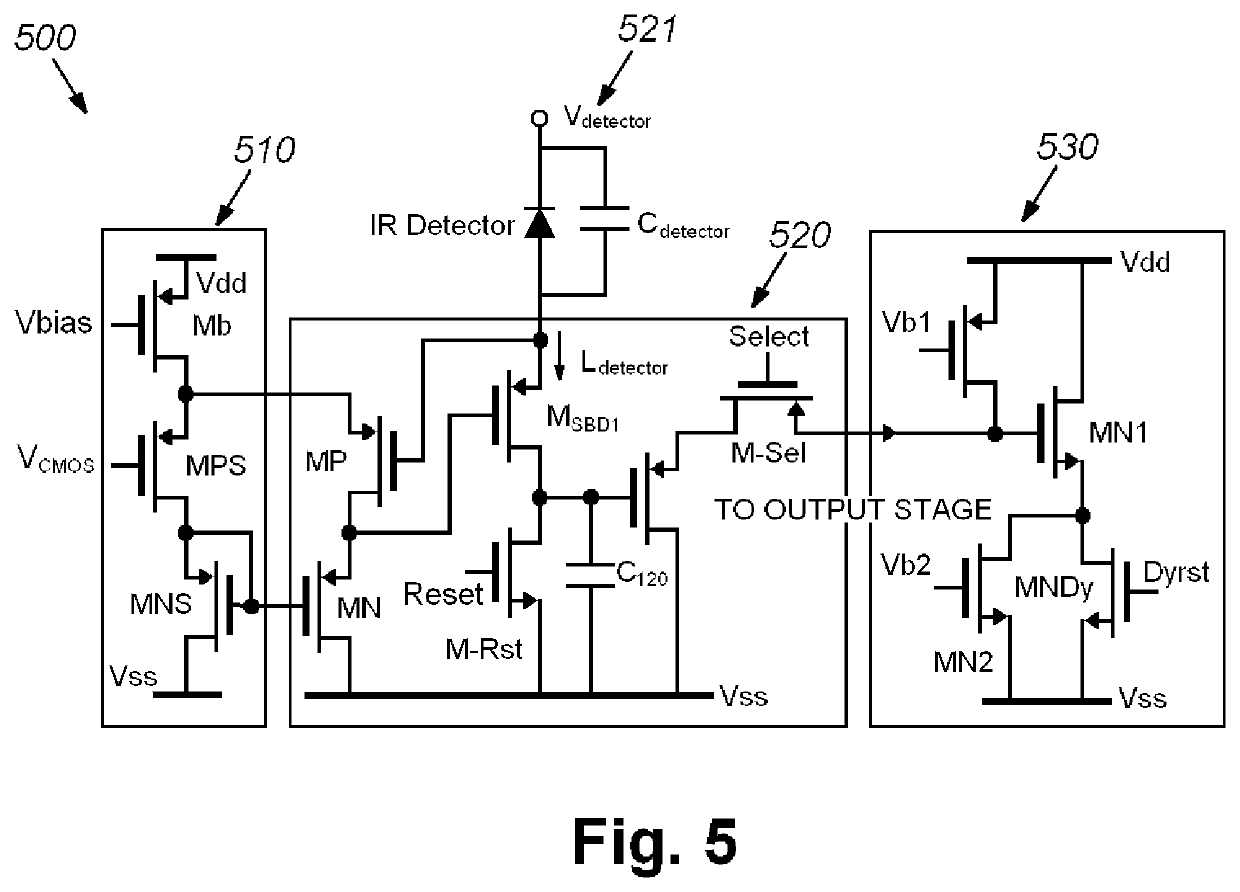Thermal detectors using graphene and oxides of graphene and methods of making the same
a technology of graphene oxides and detectors, applied in the direction of optical radiation measurement, instruments, semiconductor devices, etc., can solve the problems of affecting and most photodetectors disadvantageously not integrated with existing microelectronics technology, etc., to achieve the elimination of nyquist limited behavior and improve the performance of ir detection systems
- Summary
- Abstract
- Description
- Claims
- Application Information
AI Technical Summary
Benefits of technology
Problems solved by technology
Method used
Image
Examples
Embodiment Construction
[0033]Devices including graphene single layers or multilayers suspended over gaps (for example, gaps of approximately 50-250 nm) can be employed as Infrared (IR) radiation detectors. In addition, the application of graphene single layer or multilayers on a thermally isolated cantilever beam can be employed as an IR radiation detector.
[0034]Graphene based detectors have several important and unique features that are not available with existing technologies. First, arrays of these nanotube light detectors can be formed using patterning technology at minimum dimensions of the lithography node used or dictated by the demands of the optical imaging system. It is possible to create 25, 17, or 8 micron square or less detectors limited only by photolithography techniques.
[0035]Illustrative embodiments of the invention allow integration at a level of one light detector per ten or less transistors at the minimum dimension of a given lithography node or the integration of large arrays that are...
PUM
| Property | Measurement | Unit |
|---|---|---|
| specific wavelength | aaaaa | aaaaa |
| specific wavelength | aaaaa | aaaaa |
| specific wavelength | aaaaa | aaaaa |
Abstract
Description
Claims
Application Information
 Login to View More
Login to View More - R&D
- Intellectual Property
- Life Sciences
- Materials
- Tech Scout
- Unparalleled Data Quality
- Higher Quality Content
- 60% Fewer Hallucinations
Browse by: Latest US Patents, China's latest patents, Technical Efficacy Thesaurus, Application Domain, Technology Topic, Popular Technical Reports.
© 2025 PatSnap. All rights reserved.Legal|Privacy policy|Modern Slavery Act Transparency Statement|Sitemap|About US| Contact US: help@patsnap.com



